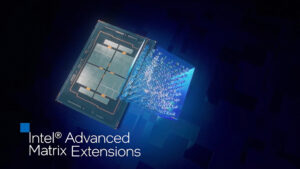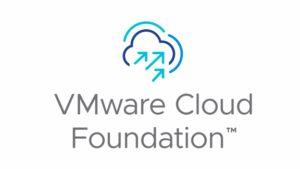Harnessing the Power of VMware’s Private AI on Intel: Enhancing Data Security, Privacy, and Virtualising AI Workloads
As artificial intelligence (AI) continues to transform workplace applications, the requirement for strong, secure, and efficient infrastructure becomes more and more crucial. VMware’s Private AI on Intel provides a compelling solution that enables the utilisation of AI in mainstream infrastructure. It focuses on ensuring data protection, privacy, and the smooth integration of AI workloads with conventional virtualised environments. This essay examines the advantages of this potent mix, emphasising how it allows for the safe implementation of AI alongside ordinary workloads on familiar platforms.
Enhancing Data Security and Privacy
Amidst the current scenario, characterised by frequent data breaches and growing worries about privacy, it is imperative to prioritise data security while implementing AI systems. VMware’s Private AI solution, utilising Intel’s sophisticated hardware, effectively tackles these challenges in a comprehensive manner:

- Secure Boot and Virtual TPM: VMware’s vSphere incorporates Secure Boot and Virtual TPM (Trusted Platform Module) to guarantee that systems exclusively boot with software that has been cryptographically verified and deemed trustworthy. This ensures that any malicious code is not executed during the boot process.
- vSphere Trust Authority and VM Encryption: These features enhance security by guaranteeing that only trusted workloads are executed on trustworthy hardware. VM Encryption guarantees the security of data stored within virtual machines, even in the event of unauthorised access to the storage.
- Advanced Identity and Access Management: By integrating with VMware Identity Manager and third-party identity providers such as Okta and Microsoft Entra ID, security is enhanced through efficient user access management, thereby guaranteeing that only authorised workers can access sensitive AI workloads.
- NSX-Enabled Microsegmentation: VMware’s NSX network virtualisation product provides microsegmentation features that separate workloads and safeguard against the spread of attacks within the data centre. The inclusion of Advanced Threat Prevention features significantly strengthens network security.
Virtualising AI Workloads Alongside Traditional Workloads
Virtualisation provides substantial benefits in the management and optimisation of AI workloads, especially when these workloads may be executed concurrently with ordinary virtualised operations. VMware and Intel collaborate to optimise virtualised AI workloads, resulting in improved performance and efficiency.

- Performance Optimization with Intel AMX: The 4th and 5th Gen Intel Xeon Scalable Processors are equipped with Intel Advanced Matrix Extensions (AMX), which provide a significant boost in performance, up to 10 times, for real-time AI inference jobs as compared to earlier generations. This enables the effective execution of intricate AI models on CPU-based infrastructure.
- Cost Efficiency: Utilising CPUs for AI workloads might result in substantial cost savings in comparison to GPU-based systems. This is especially advantageous for jobs that involve processing large amounts of data at once and for workloads that involve drawing conclusions or making inferences, where the need for fast response times is less crucial.
- Seamless Integration with Traditional Workloads: An important advantage of VMware’s approach is the capability to execute AI workloads concurrently with conventional virtualised workloads on the identical infrastructure. Businesses may leverage their current VMware platforms to implement and oversee AI projects without the requirement to acquire distinct, specialised gear.
- Scalability and Flexibility: VMware’s virtualisation technology, along with Intel’s scalable CPUs, enables organisations to effortlessly expand the capacity of AI workloads across data centres, cloud environments, and edge computing. This adaptability guarantees that AI projects can be implemented and supervised effectively in diverse settings.
- Broad Software Ecosystem Support: Intel’s AI software stack, including of optimised frameworks and libraries like PyTorch, TensorFlow, and OpenVINO, guarantees that developers may attain immediate and efficient performance and productivity. VMware’s vSphere enhances the functionality of these tools, facilitating efficient deployment and administration of AI workloads.
Leveraging Familiar Platforms for AI Deployment
A notable characteristic of VMware’s Private AI on Intel is its capability to implement AI workloads on platforms that IT experts and developers are already acquainted with.

- Utilising Existing VMware Infrastructure: Organisations have the ability to utilise their existing VMware infrastructure to implement artificial intelligence workloads. This approach not only optimises the utilisation of current investments but also minimises the learning curve linked to novel platforms.
- Simplified Management: VMware offers a collection of management solutions, such as vSphere and VMware Cloud Foundation, that have a single interface for managing the deployment and monitoring of both AI and traditional workloads. This streamlines the process for users.
- Integration with Current Workflows: AI workloads may be seamlessly incorporated into existing workflows, enabling organisations to optimise their operations without causing any disruption to their current procedures. This is especially beneficial for implementing predictive analytics, natural language processing, and IT operations automation.
Real-World Applications and Use Cases
VMware’s Private AI with Intel is specifically engineered to provide comprehensive support for a diverse array of enterprise applications.
- Predictive Analytics and Specialized AI Models: Organisations can utilise artificial intelligence (AI) to implement predictive analytics, enhancing the process of making informed decisions and increasing operational effectiveness in multiple areas such as finance, marketing, and supply chain management.
- Natural Language Processing (NLP) and Generative AI: AI models such as Falcon, Llama 2, and StarCoder can be used to enhance applications like customer service automation, legal document processing, and marketing content generation. These models can be customised using enterprise-specific data to get optimal results.
- IT Operations and Automation: Artificial intelligence (AI) has the capability to automate many IT tasks, hence decreasing the amount of work that IT staff needs to do. This leads to improved operational efficiency, achieved through the implementation of intelligent incident management, reporting, and monitoring systems.
Conclusion
VMware’s Private AI on Intel offers a strong platform that effectively meets the important requirements of data security and privacy, while also providing the necessary performance and efficiency for virtualised AI applications. Through the utilisation of VMware’s virtualisation technology and Intel’s powerful hardware, corporations can fully exploit the capabilities of AI, leading to increased innovation and operational excellence throughout their organisations.
For more detailed insights, you can explore the resources provided by VMware and Intel, such as the VMware AI and ML landing page and the McKinsey study on the economic potential of generative AI. These resources offer valuable information on deploying AI and generative AI solutions effectively within your enterprise infrastructure.
